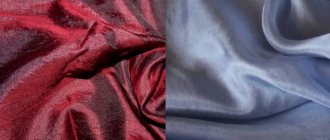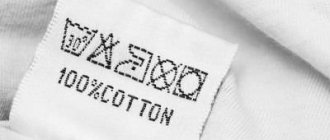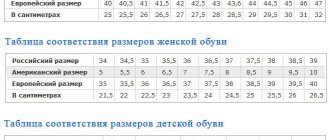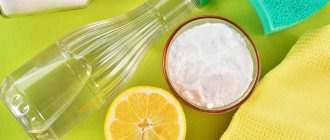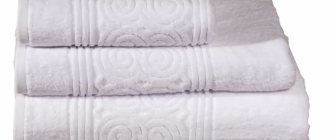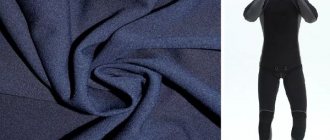Hygroscopicity
Hygroscopicity is the ability of fabrics to absorb water vapor and moisture in contact with the surface of the material, and then transfer them to the environment. In this case, the volume of sorbed moisture directly depends on the structure of the fabric fibers. For example, with a relative atmospheric humidity of 65% and an ambient temperature of 20°C, the hygroscopicity of woolen fabrics is 17%, cotton - 12-18%, linen - 12%, silk - 11%, nylon - 3%.
Why is hygroscopicity so important? The fact is that it has a serious impact on maintaining thermal balance, which is formed in the “person-clothing” system. This is explained by the fact that the presence of moisture increases the thermal conductivity of the material, since the thermal conductivity of water is an order of magnitude higher than the thermal conductivity of air. This factor is why a person freezes much faster in wet clothes than in dry clothes. The level of hygroscopicity of fabrics is of particular importance in cases where it is planned to sew workwear or produce sportswear.
Hygienic properties of fabrics
Category: Clothing
The bulk of fabrics produced by the industry are used to produce clothing. Clothing is necessary for a person to protect the body from the adverse effects of the external environment - low and high temperatures, excessive radiation, wind, rain, snow, etc. In addition, it protects against mechanical and chemical damage to the skin, protects the surface of the human body from dust, dirt, microorganisms , protects against insect and animal bites.
The main indicators of the hygienic properties of fabrics are: the absence of substances harmful to the human body in the fabrics, sorption properties of fabrics, permeability, heat-shielding properties, dust holding capacity, etc.
Hygroscopicity is the ability of a fabric to absorb water vapor from the surrounding atmosphere and retain it under certain conditions. This is one of the most important properties of fabrics. The hygroscopicity of fabrics changes with changes in relative air humidity and temperature, without remaining constant. If the moisture content in the fabric did not change with changes in temperature and humidity, then the hygroscopic properties of the fabrics would lose their hygienic significance. Fabrics with a certain hygroscopicity are a heat regulator between the human body and the environment.
It is known that the relative air humidity indoors is lower than outdoors, especially in winter and autumn (40-50% indoors, 90-100% outdoors). Due to this, moisture absorption by clothing indoors will be less than outdoors. Adsorption process and con
densation of water vapor is accompanied by the release of a large amount of heat, which should compensate for the decrease in air temperature when moving from an enclosed space to open air.
The amount of heat released in this case is equivalent to the amount of heat released by a person in 3-4 hours. It should be noted that the release of heat does not occur instantly, but over several hours.
The hygroscopicity of fabrics depends on their fibrous composition, structure, finishing, etc.
Wetness is the ability of fabrics to absorb droplets of liquid moisture. This property is important for linen, shirts, dresses, towels, sheets and other fabrics. The wettability of fabrics is characterized by its capillarity and water absorption.
Capillarity is determined by the height of the rise of liquid in one hour in a strip of fabric 50 mm wide and 300 mm long, lowered at one end into a crystallizer with a solution of eosin (2 g/l) in alcohol,
Water absorption is determined by the weight of a fabric sample immersed in water for 1 minute. The wetness of the fabric is considered sufficient if its capillarity is in the range of 100-140 mm and water absorption is more than 100%.
Water resistance is the ability of textile materials to resist wetting. Water resistance is the ability of textile materials to resist wetting and penetration of water.
To make fabrics water-resistant, their surface is subjected to special treatment with hydrophobic compounds. Since the pores are not filled, such fabrics are able to allow air and water vapor to pass through.
In waterproof fabrics, the pores are filled with a special composition that forms a continuous layer or film, due to which the fabrics do not allow moisture vapor or air to pass through, which significantly impairs the hygiene of the fabrics. The water resistance indicator is of great importance for raincoat, coat and suit woolen fabrics. Waterproofness is important for tarps, tent fabrics, umbrellas, raincoats, etc.
Air permeability is the ability of fabrics to allow air to pass through and provide ventilation to clothing, creating a certain gas and moisture composition in the underwear space. It is known that the air space contains 0.03-0.04% carbon dioxide, and the space under clothing
it can accumulate 0.06-0.08%. Hygienists claim that when the carbon dioxide content in the underwear space is more than 0.1%, fatigue and fainting occur. The greater the porosity, the greater the breathability. The air permeability of fabric at a given pressure is determined by the following formula:
Vapor permeability is the ability of fabrics to transmit water vapor that is continuously formed in the underwear space. Under certain conditions (excessive sweating), the amount of water vapor reaches large sizes. Under normal conditions, the human body releases 1 liter of water vapor, during work - 5-6 liters, intensive work - 12 liters.
Vapor permeability is characterized by the number of milligrams of water vapor passing through 1 cm2 of fabric in 1 hour (mg/1 cm2/h). This indicator is an important characteristic that determines the consumer value of linen, dress, blouse, suit, coat, and lining fabrics.
Transmittance - the most important is the permeability of ultraviolet rays. This property is of great importance, since these rays in certain quantities are vital for human life. This property of fabrics depends on their fiber composition, structure and finishing. Incident rays can not only penetrate clothing, but also be reflected and absorbed by it.
Thermal protection is the ability to retain heat generated by the human body. Thermal protection properties are one of the important indicators for many textile products intended for warm clothing.
The exchange of heat between the body of a dressed person and its environment is a complex and diverse phenomenon in which different biological and physical processes take place, while the essence of the heat-protective effect of clothing does not remain the same. It varies depending on the type of clothing, climatic and working conditions, the state of the human body and is determined by various properties of tissues.
Heat transfer through clothing fabric can occur: convection, thermal conductivity, radiation, conduction of moisture vapor released by the human body.
The thermal insulation properties of fabrics depend on many factors, but the most important thing is how much air is in the closed pores of the fabric, which depends on the fibrous composition of the fabrics, their structure and the nature of the finish.
Dust holding capacity is the ability of a fabric to absorb dust and various contaminants from the environment. This is a negative property of fabrics, which depends on the fiber composition of the fabric, its structure and finishing.
Thermal protection
The ability of clothing to retain the heat generated by the human body is commonly called thermal insulation. Thermal protection characteristics are given attention even at the clothing design stage. To do this, a number of properties of the formed heat-protective package are analyzed: air permeability and thickness of fabrics, the overall thermal resistance of the package, design features of clothing, the structure of the materials used. At the same time, the key characteristic on which the efforts of clothing creators are focused is the thermal resistance of finished products. This parameter essentially represents the reciprocal of thermal conductivity.
The thermal resistance of clothing depends on the fiber structure of the fabrics, the thickness and number of air layers. Obviously, this is a heterogeneous value that differs for different types of products. The highest heat protection parameters are for garments made from thick and dense fabrics with pile or fleece. Clothes made of wool, yarn, lavsan and nitron fibers also have high heat protection.
The use of dense and thick fabrics in the construction of clothing leads to weighting of the products, which in turn negatively affects a person’s motor activity. This can significantly worsen the popularity and economic performance of manufactured clothing. Therefore, manufacturers are trying to design a thermal protection package from fabrics that have the best parameters of thermal resistance, vapor permeability, density and weight.
Heat protection package
The most rational option is considered to be a four-layer heat-protective clothing package, in which its functions are clearly defined for each layer:
1.Top
The outer fabric creates the external design of the clothing, and also forms the required characteristics of wear resistance, strength, resistance to stains, wrinkle resistance, and ease of cleaning. In addition, the key function of the upper material is to provide the necessary parameters for moisture and air tightness. This is of great importance for creating an optimal gas-humidity structure of the air under clothes.
2.Windproof pad
Windproof fabrics must provide the required level of breathability. In addition, their task is to form a certain strength and rigidity of the layer, which is necessary for the stability of the product against mechanical stress. The level of optimal breathability should not reduce the thermal protection of clothing, and it largely depends on the intended operating conditions. An example is the sewing of windbreakers for sports and the production of ordinary jackets, where the requirements for the breathability of the windproof lining will be different.
3.Insulating lining
This layer is mainly responsible directly for the heat-protective function. Lining fabrics must have a certain thickness, low bulk density and some elasticity. All this will ensure good heat retention due to the high air content in the layer. A sufficient level of moisture conductivity is also important so that moisture can freely leave the air underneath.
4.Bottom lining
The bottom lining is made of durable, wear-resistant and lightweight fabrics with a smooth surface. The material should be characterized by minimal electrification, as well as a color design that is in harmony with the color of the top.
The thermal protection characteristics of clothing depend significantly on its design. To protect the underwear space from the cool outside environment, elements such as wristbands on the sleeves, a one-piece hood closed to the top of the gate, and a belt at the waist can be used. However, it must be remembered that clothing of an excessively closed design significantly impairs the ventilation of the air under clothing. Ideally, clothing production should be carried out taking into account the needs of the population living in certain climatic zones.
Requirements for casual clothing
Everyday sets are worn for different occasions, but they should always be comfortable, not hinder movement, and ensure normal heat and gas exchange between the human body and the environment. Their task is not to interfere with normal blood circulation during rest or action, make breathing difficult, compress internal organs, interfere with movement, and release harmful substances.
Some of the basic requirements for fabric for every day are:
- strength;
- wear resistance;
- easy to clean from dirt;
- small mass (no more than 10% of a person’s weight).
When choosing everyday items, it is recommended to pay attention to their cut and material. Products for every day can be made from natural, synthetic, artificial, and chemical fabrics. Regardless of the type of fabric, clothing should protect the body from external negative factors, keep it clean and healthy.
Permeability
The permeability of materials is the ability to allow air, moisture, liquids, dust, light, smoke, etc. to pass through. When it comes to clothing fabrics, the key parameters include breathability, vapor permeability, water permeability, dust permeability and light permeability.
Breathability
The breathability of fabrics is extremely important for the exchange of air in the underwear space with the atmosphere of the external environment. The fact is that the composition of the air under clothing always differs from the atmospheric air, since it is influenced by gaseous secretions of the skin and contamination of clothing. The supply of fresh air to the body helps remove carbon dioxide, which can have a negative impact on a person’s well-being. Therefore, clothing must be sufficiently ventilated.
The level of breathability of clothing depends on the fibrous structure of the fabrics, the number of layers used in the bag and its humidity. Increasing the number of layers significantly worsens the overall breathability of clothing. If we talk about individual types of clothing assortment, then the maximum breathability is characterized by clothes from the dress and underwear assortment, and the minimum - by suits, raincoats and coats.
Vapor permeability
Vapor permeability of clothing is its property of allowing water vapor to pass through itself, which is necessary to create normal living conditions. Vapor permeability decreases, as a rule, with increasing density or thickness of the material. Products made from cotton and viscose fabrics have optimal vapor permeability characteristics.
Waterproof
The ability of clothing to prevent the penetration of water from precipitation is usually called waterproofing. Such properties are typical for materials with increased density or special impregnation. Clothing made from waterproof fabrics usually has little breathability, so ventilation holes should be included in their design. However, there are exceptions - high-tech membrane fabrics developed in recent years. Having excellent protection from moisture and water, the membranes are characterized by a good level of air and vapor permeability.
Dustproof
Clothing must have a sufficient level of resistance to stains, which is largely determined by its ability to pass dust. Dust resistance depends on the structure of the fabric and the type of fibers, the type of finishing, the presence and number of seams. It is obvious that dust settles much more actively on materials with a rough or fleecy surface than on smooth fabrics. The level of dust resistance itself mainly depends on the density and thickness of the material.
Light transmittance
The ability of a fabric to transmit light is called transmittance or transparency. Here, ultraviolet rays, which are necessary for the production of important microelements in the body, become especially important. For example, a child's need for a certain dose of ultraviolet radiation can be compared with the need for oxygen. And the total daily required dose for a person is 0.3-0.6 of the erythemal dose (causing tanning). In addition, UV radiation helps disinfect clothing fabrics and human skin. Requirements for the light transmission of clothing in certain conditions differ, and largely depend on the level of solar radiation.
Weight of clothing
The weight of garments is an important property that is important for normal life. This parameter depends on the weight of the fabrics used, the design features of the clothing, as well as its dimensional characteristics (height and fullness). Excessively high weight of winter clothing inevitably leads to increased energy costs when wearing it. Therefore, manufacturers of clothing products are constantly striving to use the lightest main and auxiliary fabrics and insulation materials, and are trying to rationalize the heat-protective package of products. The weight of clothing is a particularly significant factor for the elderly and children.


